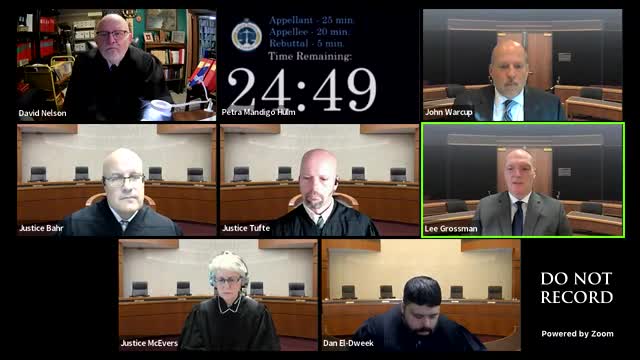City's Floodplain Permit Approval Sparks Controversy and Legal Battle
November 13, 2024 | Supreme Court , State Agencies, Organizations, Executive, North Dakota
This article was created by AI summarizing key points discussed. AI makes mistakes, so for full details and context, please refer to the video of the full meeting. Please report any errors so we can fix them. Report an error »

In a recent government meeting, significant concerns were raised regarding the city of Burlington's handling of a building permit application submitted by Casey Hoff in 2017. Hoff's project involved removing an addition from a house built in the 1930s and constructing a new addition. The permit process, however, has come under scrutiny due to alleged miscalculations related to floodplain regulations.
During the application process, Hoff met with city building inspector Rod Schwandt, who filled out the permit application based on Hoff's plans. The city recorded the existing structure's square footage as 1,716 square feet, despite Hoff indicating that the new addition would be significantly larger. Schwandt deviated from standard practice by using appraisals provided by Hoff to determine the permit's value, rather than the typical multiplier of $140 per square foot.
The appraisals indicated that the existing structure was valued at $230,000, while the proposed changes would raise the property's value to $345,000. This discrepancy of $115,000 led the city council to conclude that Hoff's improvements did not constitute a \"substantial improvement,\" a designation that would trigger stricter floodplain regulations.
However, Amanda Schooling, the emergency manager for Ward County, later identified that the city had improperly approved the permit. She noted that neither Schwandt nor city engineer Patrick Sampson had adequately reviewed the appraisals, which included the value of the land rather than focusing solely on the structure's value and the cost of improvements. This oversight raised questions about the city's compliance with floodplain ordinances and federal regulations.
Sampson later admitted to miscalculating the substantial improvement determination, but the city has since attempted to reassess the situation, suggesting that Hoff's construction costs exceeded the 50% threshold of the existing structure's value. This claim, however, was not part of the original discussions during the permit application process.
The meeting highlighted the need for clearer communication and adherence to regulations within the city's permitting process, particularly concerning properties located in flood-prone areas. As the situation unfolds, it raises broader implications for how municipalities manage building permits and ensure compliance with environmental regulations.
During the application process, Hoff met with city building inspector Rod Schwandt, who filled out the permit application based on Hoff's plans. The city recorded the existing structure's square footage as 1,716 square feet, despite Hoff indicating that the new addition would be significantly larger. Schwandt deviated from standard practice by using appraisals provided by Hoff to determine the permit's value, rather than the typical multiplier of $140 per square foot.
The appraisals indicated that the existing structure was valued at $230,000, while the proposed changes would raise the property's value to $345,000. This discrepancy of $115,000 led the city council to conclude that Hoff's improvements did not constitute a \"substantial improvement,\" a designation that would trigger stricter floodplain regulations.
However, Amanda Schooling, the emergency manager for Ward County, later identified that the city had improperly approved the permit. She noted that neither Schwandt nor city engineer Patrick Sampson had adequately reviewed the appraisals, which included the value of the land rather than focusing solely on the structure's value and the cost of improvements. This oversight raised questions about the city's compliance with floodplain ordinances and federal regulations.
Sampson later admitted to miscalculating the substantial improvement determination, but the city has since attempted to reassess the situation, suggesting that Hoff's construction costs exceeded the 50% threshold of the existing structure's value. This claim, however, was not part of the original discussions during the permit application process.
The meeting highlighted the need for clearer communication and adherence to regulations within the city's permitting process, particularly concerning properties located in flood-prone areas. As the situation unfolds, it raises broader implications for how municipalities manage building permits and ensure compliance with environmental regulations.
View full meeting
This article is based on a recent meeting—watch the full video and explore the complete transcript for deeper insights into the discussion.
View full meeting
